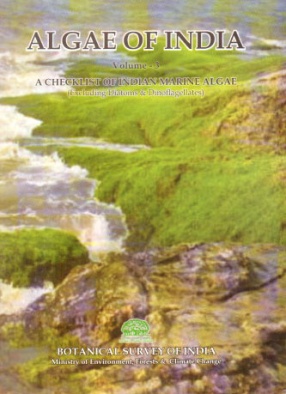The ‘Project Tiger’ was initiated in India on 1 April, 1973, as a Centrally Sponsored Plan Scheme, with a view to conserve and increase the tiger population in their natural habitats for scientific, economic, aesthetic, cultural and ecological values; and to preserve for all times areas of such biological importance as a natural heritage for the benefit, education and employment of the people. Presently, there are 25 Tiger Reserve in India, spread throughout the country in 16 states, covering over 33.875, sq.km. forest area, representing different forest types of the Indian vegetation. The botanical account of various Tiger Reserves is prerequisite in evaluation of the habitat requirement for tigers, as well as for other animals and plants, commonly found in association with tigers. The various Tiger Reserves in India are : Bandipur (Karnataka), Corbett (Uttaranchal), Kanha (Madhya Pradesh), Manas (Assam), Melghat (Maharashtra), Palamau (Bihar), Ranthambhor (Rajasthan), Simlipal (Orissa), Sunderbans (West Bengal), Periyar (Kerala), Sariska (Rajasthan), Buxa (West Bengal), Indravati (Chhattisgarh), Nagarjunasagar (Andhra Pradesh), Namdapha (Arunachal Pradesh), Dudhwa (Uttar Pradesh), Kalakad-Mudathurai (Tamil Nadu), Valmiki (Bihar), Pench (Madhya Pradesh), Tadoba-Andheri (Maharashtra), Bandhavgarh (Madhya Pradesh), Panna (Madhya Pradesh), Dampha (Mizoram), Bhadra (Karnataka) and Pench (Maharashtra). The Nagarjunasagar Tiger Reserve (Andhra Pradesh) is the largest (3,568 sq.km.), whereas the Pench Tiger Reserve (Maharashtra) is the smallest in area (257 sq.km.).
Flora of the Indravati Tiger Reserve
$38.00
$40.00
In stock
Free & Quick Delivery Worldwide
All orders amounting to US$ 50 or more qualify for Free Delivery Worldwide. For orders less than US$ 50, we offer Standard Delivery at $14 per book.
ABOUT THE AUTHOR Anand Kumar
Anand Kumar, M.Sc., is currently working as a Botanist in the Botanical Survey of India, Central Circle, Allahabad. After completing his M.Sc. with Ist class from the University of Allahabad, Allahabad, he joined B.S.I. inj1973. Since then he is actively working on Taxonomy and Floristic Diversity of Angiosperms. He has extensively Surveyed various areas of Madhya Pradesh and Chhattisgarh. He has published more than 75 research papers and contributed various families in the Flora of Madhya Pradesh. In addition, he has authored three books including Flora of Indravati Tiger Reserve.
ABOUT THE AUTHOR P.S.N. Rao
P.S.N. Rao, Ph.D., Master of Town Planning (SPA), B.E. (Civil), F.I.T.P., F.I.V., A.I.I.A., Cert. In Urban Management (Canada) is a well known housing, urban development and municipal sector specialist based in new Delhi, India. He is a recipient of the SPA Gold Medal, the Indian Building Congress Medal and the AICTE Young Teachers’ Award of the Government of India. He has 18 years of experience during which he has published over one hundred papers, supervised over 70 post graduate theses on various aspects of urban development and conducted over 30 research and consultancy assignment. Presently, he is a Professor of Urban Management at the Indian Institute of Public Administration (IIPA), New Delhi where he is involved in capacity building for ISA and other functionaries of the central, state and local governments. He is also the Joint Editor of Nagarlok, an urban affairs quarterly of the IIPA.
reviews
0 in total
Review by Anonymous
Be the first to review “Flora of the Indravati Tiger Reserve” Cancel reply
You must be logged in to post a review.
Bibliographic information
Title
Flora of the Indravati Tiger Reserve
Author
Edition
1st ed.
Publisher
Length
xiv+413p., Figures; Col. plates; 23cm.
Subjects
tags
#Tigermore by Anand Kumar see more
more by P.S.N. Rao see more
Algae of India, Volume 3: A Checklist of Indian Marine Algae: Excluding Diatoms and Dinoflagellates
From the preface: ...
$45.00
$50.00
Municipal Finance In India: Role of Twelfth Finance Commission
At the focus of urban ...
$22.50
$25.00
similar bookssee more
Drinking Water in Rural India
$27.00
$30.00
Basics of Nano Chemistry
$43.20
$48.00










There are no reviews yet.